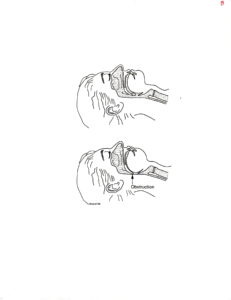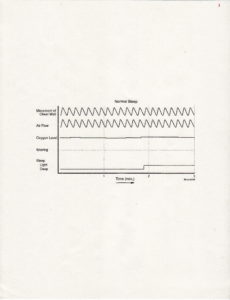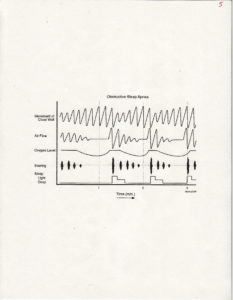What is sleep apnea? It is an extremely common condition that should be understood by everyone. Sleep apnea is a temporary blockage or obstruction of our breathing while we sleep. A person with sleep apnea experiences repeated blockages of their air passage during sleep. The condition of obstructive sleep apnea is diagnosed when the blockages occur repeatedly.
When we sleep, our muscles relax. This can result in significant narrowing and often closure of the air passage between the lungs and the mouth and nose. The obstruction occurs between the voice box (larynx) and the nasal passage and mouth. This relaxation results in a critical narrowing. At some degree of relaxation, as the passage narrows, air has difficulty passing in and out of our lungs. A partial obstruction is called ‘hypopnea’ while a complete obstruction is an ‘apnea’. Both hypopneas and apneas have the same effects. Each is a significant obstructive event.

Figure 1
Side view of anatomy of upper airway. Top figure shows normal open airway. The bottom figure shows area of obstruction during a obstructive apnea event. The obstruction demonstrated is at the base of the tongue
Obstruction of the airway leads to physiological changes. The level of oxygen in the blood drops and the level of carbon dioxide increases. These changes occur within a few seconds. The brain, through its mechanisms to control breathing, senses these changes and immediately increases our breathing efforts. The increased breathing effort results in the opening of the air passage and the return to normal of the blood oxygen and carbon dioxide levels. This increased effort often produces a loud noise, snore or snort as airway open. The blockage will last for 15 to 20 seconds on average. An individual can wake with the choking sensation when this occurs, however, that is very unusual. Most people sleep through the entire choking episode.

Figure 2
A three minute graphic recording of a person’s normal breathing. The items recorded are chest wall movements, air movement at nose and mouth, oxygen level, snoring and sleep level.

Figure 3
A three minute recording of a person having obstructive apnea events. Note the increase in chest wall movement, the absent of airflow, dropping oxygen levels, and snoring that is occurring.
The condition of obstructive sleep apnea is diagnosed when these events occur regularly and frequently. Current knowledge suggests that these have to occur at a certain frequency to create symptoms and/or medical problems. Medical professionals, insurance payers, and government bureaucrats established that five events or more per hour indicates the presence of the condition of obstructive sleep apnea.




